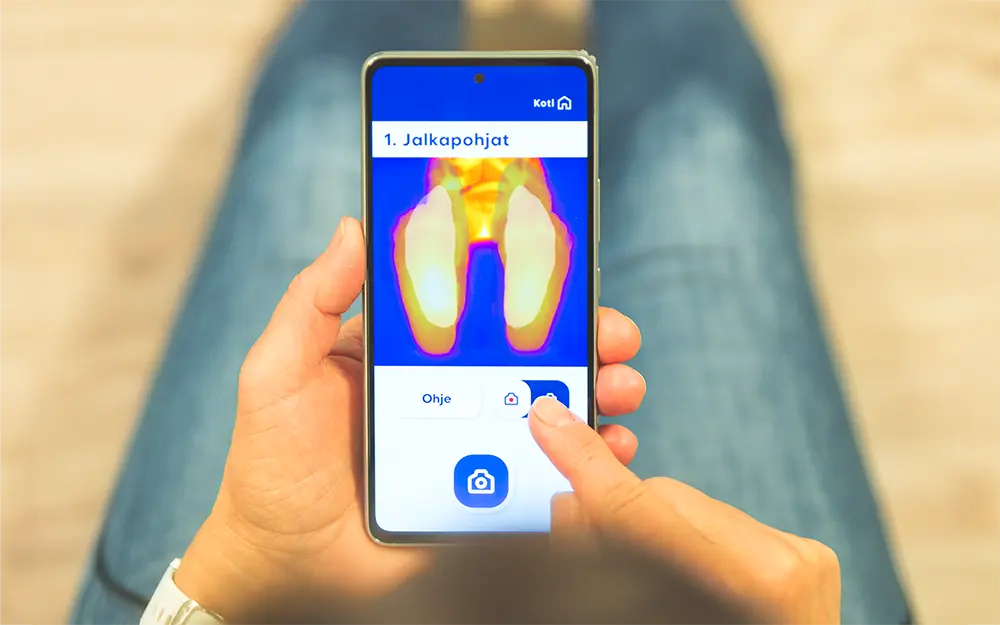Thermidas telehealth solutions
We are developing the world’s first At-home Infrared Temperature Monitoring (AITM) solution. Already trialed by the NHS in the UK, the interim results are encouraging. Sign up for our newsletter, and we’ll keep you updated with the latest developments.
Every year, over 35 million Diabetic Foot Ulcers result in 4.5 million amputations, costing global healthcare systems a staggering $150 billion.

In collaboration with Thermidas, we aim to utilize technology, data and artificial intelligence to improve the care and outcomes by the proactive detection and prevention of diabetes-related foot disease, in particular ulceration.
Prof. Brian Kennon, MD
National Lead of Diabetes in Scotland
Backed up by research
Many studies point out the importance of at-home foot temperature monitoring. Elevated temperatures are a known risk factor preceding DFU’s in moderate to high-risk patients. Thermidas’ telehealth solution empowers individuals to proactively monitor their foot health at home.IWGDF Guidelines
“Given the high incidence of subsequent diabetic foot complications to the sound foot in patients with a history of proximal LEA and patients being treated for a wound, practice of daily temperature monitoring of a single foot has the potential to significantly improve outcomes and reduce resource utilization in this challenging high-risk population.”
“At-home daily foot temperature monitoring and reduction of ambulatory activity in response to hotspots reduce the risk of a DFU in moderate or high risk people with a low level of certainty.”
Golledge J, Fernando ME, Alahakoon C, Lazzarini PA, Aan de Stegge WB, van Netten JJ, Bus SA. Efficacy of at home monitoring of foot temperature for risk reduction of diabetes-related foot ulcer: A meta-analysis. Diabetes Metab Res Rev. 2022 Sep;38(6):e3549. doi: 10.1002/dmrr.3549. Epub 2022 Jun 8. PMID: 35605998; PMCID: PMC9541448.
“Remote foot temperature monitoring is a cost-effective addition to standard of care in patients with diabetic neuropathy at a moderate-to-high risk of DFU and subsequent amputation. Further, reduction in DFU and associated complications may result in improvements in the patient’s quality of life and mental health.“
“High temperature gradients between feet may predict the onset of neuropathic ulceration and self-monitoring may reduce the risk of ulceration.“
“These results suggest that at-home patient self-monitoring with daily foot temperatures may be an effective adjunctive tool to prevent foot complications in individuals at high risk for lower-extremity ulceration and amputation.”
Pilot study by the NHS
